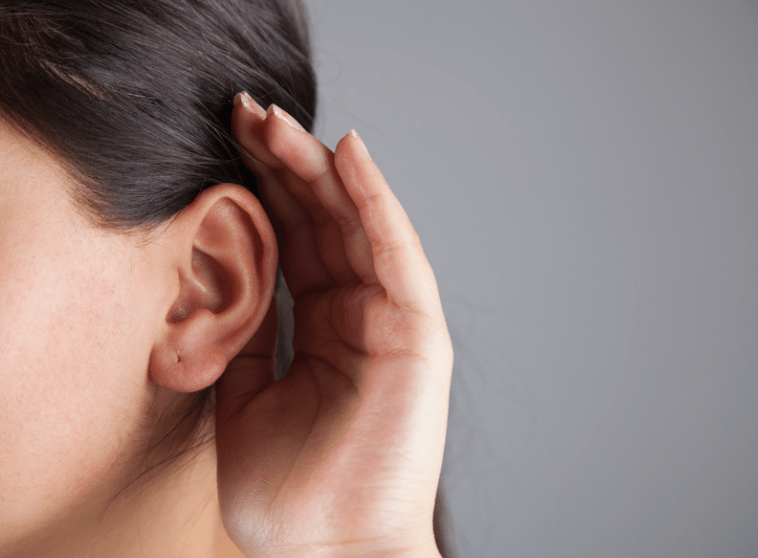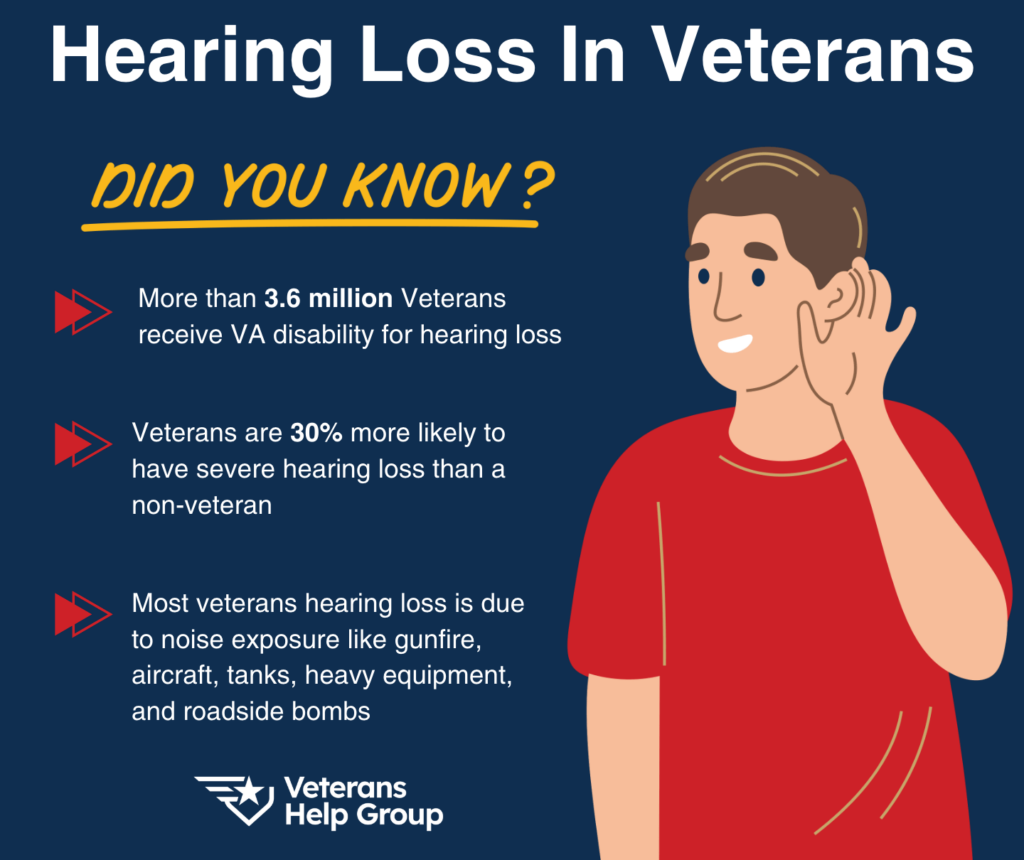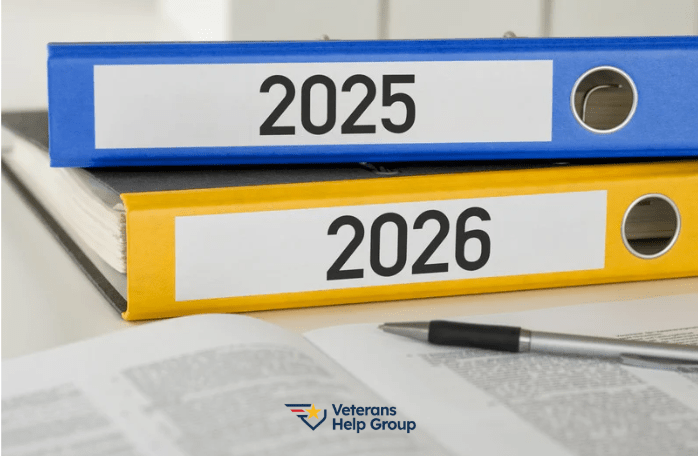
Table Of Contents
How Does The VA Rate Hearing Loss?
According to the 2024 Annual Benefits Report from the U.S. Department of Veterans Affairs (VA), more than 1.5 million veterans are receiving VA disability benefits for hearing loss. More than 100,000 of those were receiving VA hearing loss compensation based on a claim approved in 2024. There are also more than 3.2 million veterans receiving VA disability for tinnitus, though there is significant overlap between these two groups.
How to Establish Service Connection for Hearing Loss?
When you file a VA claim for hearing loss, it will be your responsibility to show that you have a current diagnosis and that your hearing loss is likely service-connected.
Current Diagnosis
The first step to getting VA disability for hearing loss is showing that there is a current diagnosis. The VA is strict about the type of diagnosis it will accept when it comes to hearing loss. For VA purposes, a veteran must undergo a hearing exam by a licensed audiologist.
The audiologist must administer two tests for the VA to accept a diagnosis of hearing loss and determine the veteran’s VA disability rating for hearing loss:
- Maryland CNC Test: This test is a speech discrimination test that determines a veteran’s ability to understand words.. The tester will play a recording of various words in a controlled environment and the veterans have to repeat them back. Scoring is based on the percentage of words the veteran was able to correctly understand and repeat. A deficit of just 6% may be sufficient to qualify for hearing loss veterans benefits. However, the VA disability rating assigned will be higher when the level of impairment is more severe.
- Puretone Audiometric Test: This test measures the loudness (decibels) and pitches (frequencies) in which a veteran can hear a sound. It determines the level of hearing loss by measuring the faintest tones someone can pick up on across a range of frequencies.
In-Service Event
Under certain narrow conditions, hearing loss may be presumed service connected. However, in most cases, it will be up to the veteran and their VA disability benefits advocate to prove the connection.To establish that the diagnosed hearing loss is service connected, the veteran must show either that the condition started during their military service or that an event or illness that occurred during their military service caused the hearing loss–even if the problem wasn’t identified at the time.
Most hearing loss in the military is due to noise exposure. Common in-service events include combat service, and exposure to artillery fire and small arms fire. Certain military occupational specialties that involve mechanical work on vehicles, aircrafts and other heavy equipment may also provide a basis for a hearing loss claim. However, there are other possible causes, including exposure to pressure or vibration and even some infectious diseases. Hearing loss may even be a secondary-connected condition based on a chronic service-connected condition such as diabetes.
For VA purposes, a veteran must undergo a hearing exam by a licensed audiologist. The audiologist must administer two tests for the VA to accept a diagnosis of hearing loss:
- Maryland CNC Test: This test is a speech discrimination test that determines a veteran’s ability to understand words due to hearing loss. The tester will say various words in a controlled environment and the veterans have to repeat them back. The results of this test are percentages which are then used to rate the condition.
- Puretone Audiometric Test: This test measures the loudness (decibels) and pitches (frequencies) in which a veteran can hear a sound. It determines the level of hearing loss by measuring the faintest tones someone can pick up on.

The Hearing Loss VA Rating System
Once the VA has the test results from the Maryland CNC test and puretone audiometric test, a Roman numeral gets assigned to each ear, These Roman numerals are a tool used to keep the rating system organized.
If both tests have been performed then the following table is used to determine the Roman numerals. The results of the puretone test run across the top of the table and the results for the speech test run down the left side of the table.
| Puretone Threshold Average à % of Speech Discrimination ↓ | 0-41 | 42-49 | 50-57 | 58-65 | 66-73 | 74-81 | 82-89 | 90-97 | 98+ |
| 92-100% | I | I | I | II | II | II | III | III | IV |
| 84-90% | II | II | II | III | III | III | IV | IV | IV |
| 76-82% | III | III | IV | IV | IV | V | V | V | V |
| 68-74% | IV | IV | V | V | VI | VI | VIII | VIII | VIII |
| 60-66% | V | V | VI | VI | VII | VII | VIII | VIII | VIII |
| 52-58% | VI | VI | VII | VII | VIII | VIII | VIII | VIII | IX |
| 44-50% | VII | VII | VIII | VIII | VIII | IX | IX | IX | X |
| 36-42% | VIII | VIII | VIII | IX | IX | IX | X | X | X |
| 0-34% | IX | X | XI | XI | XI | XI | XI | XI | XI |
Once a Roman numeral is assigned to each ear a rating is assigned using the below table. The Roman numeral on the left side is for the each that hears better (with a smaller roman numeral). The Roman numeral for the ear that hears worse (with a bigger Roman numeral) is across the top of the table.
| Worst Ear à Best Ear ↓ | I | II | III | IV | V | VI | VII | VIII | IX | X | XI |
| I | 0% | 0% | 0% | 0% | 0% | 0% | 0% | 0% | 0% | 10% | 10% |
| II | 0% | 0% | 0% | 10% | 10% | 10% | 10% | 10% | 10% | 10% | |
| III | 0% | 10% | 10% | 10% | 20% | 20% | 20% | 20% | 20% | ||
| IV | 10% | 10% | 20% | 20% | 20% | 30% | 30% | 30% | |||
| V | 20% | 20% | 30% | 30% | 40% | 40% | 40% | ||||
| VI | 30% | 30% | 40% | 40% | 50% | 50% | |||||
| VII | 40% | 40% | 50% | 60% | 60% | ||||||
| VIII | 50% | 50% | 60% | 70% | |||||||
| IX | 60% | 70% | 80% | ||||||||
| X | 80% | 90% | |||||||||
| XI | 100% |
VA Rating for Tinnitus and Hearing Loss
Many veterans who suffer from service-connected hearing loss also suffer from tinnitus, and vice versa. Currently, a veteran who suffers from service-connected tinnitus without hearing loss will typically be assigned a 10% A disability rating. However, proposed changes that could take effect as early as later in 2025 would eliminate that standalone rating and only consider tinnitus as part of a hearing loss rating.
How Can I File A VA Claim for Hearing Loss?
The first step toward submitting a successful VA disability claim for hearing loss or any other condition is understanding what is required to prove your claim and what type of evidence you will need. Veterans Help Group has been supporting veterans in getting the benefits they deserve since 1995. When you hire an advocate in our office, we will put our in-depth knowledge of the VA disability claims and appeals processes to work for you.
If you or a loved one served, and suffer from hearing loss, call Veterans Help Group at 855-855-8992 or contact us here now.

VA Dental Benefits and Disability Ratings For Teeth
VA Dental Benefits and Ratings for Teeth - MATT SAUERWALD, VICE-PRESIDENT, VETERANS HELP...

Veterans Help Group Sponsors the 34th Annual Legends Invitational at Pebble Beach
Veterans Help Group Sponsors the 34th Annual Legends Invitational at Pebble Beach Veterans Help...

Top Veteran Questions Answered: Reddit’s Most-Asked VA Disability Questions
Top Veteran Questions Answered: Reddit’s Most-Asked VA Disability Questions Look, we get it. The...





